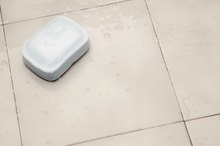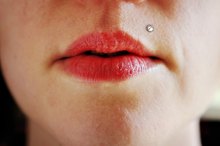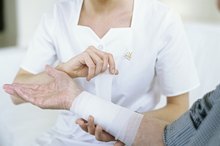Care of Skin After a Mole Has Been Removed
Mole removal involves the excision of a mole, or melanocytic nevus, for biopsy or for cosmetic reasons 12. The procedure is typically performed on an outpatient basis, often in a dermatologist's office. Your doctor may use a scalpel to cut the mole out of your skin and then close the excision site with sutures, or he may shave the mole off the surface of your skin, creating only a small wound. Knowing how to care for your skin following mole removal will prevent infection, speed healing and reduce the likelihood of scarring 2.
Clean your wound twice each day with diluted hydrogen peroxide or an antibacterial soap and water. If your doctor closed your wound with sutures, follow your aftercare instructions regarding whether you can get your wound wet.
Care of Skin After Cryosurgery
Learn More
Apply an antibiotic ointment to your wound after cleaning, and then cover with a sterile bandage.
Take over-the-counter pain relievers, such as ibuprofen, as needed. Cosmetic Surgery Guide states that discomfort following mole removal is generally mild and varies depending on the type of procedure performed 12.
How to Get Rid of Stitch Scars on the Face
Learn More
Avoid scratching or rubbing your wound during recovery. As your wound heals, it may itch. Keeping the area moist may help relieve itching.
Return to normal activities immediately following your procedure. If your wound is located on a joint, such as the elbow or knee, movement may be uncomfortable due to pulling on the wound or on your sutures. Limiting your use of the affected joint for a day or two is typically sufficient to alleviate discomfort.
Related Articles
References
- Cosmetic Surgery Guide 2010: Mole Removal
- SurgiCare: Mole Removal
- National Cancer Institute. Common moles, dysplastic nevi, and the risk of melanoma. Updated April 27, 2018.
- American Academy of Dermatology. Moles: Overview.
- American Academy of Dermatology. Moles: Who gets and types.
- American Cancer Society. Tests for melanoma skin cancer. Updated August 14, 2019.
- American Cancer Society. Can melanoma skin cancer be prevented? Updated August 14, 2019.
- American Cancer Society. Key statistics for melanoma skin cancer. Updated January 8, 2020.
- Cleveland Clinic. Q&A Freckles and your skin.
- Cleveland Clinic. How to get rid of age spots (liver spots) and avoid more. March 12, 2020.
- American Academy of Dermatology. 5 reasons to see a dermatologist for mole, skin tag removal.
Writer Bio
Sandra Ketcham has nearly two decades of experience writing and editing for major websites and magazines. Her work appears in numerous web and print publications, including "The Atlanta Journal-Constitution," "The Tampa Bay Times," Visit Florida, "USA Today," AOL's Gadling and "Kraze Magazine."









